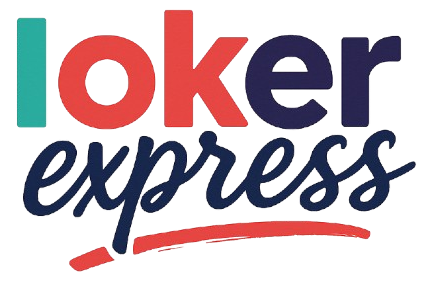When I first came across Uhoebeans software, I didn’t think it would change the way my team worked. I had used plenty of tools before — project trackers, CRMs, chat apps — but nothing that felt complete. Uhoebeans surprised me because it combines almost everything we needed in one clean platform: task management, automation, communication, and analytics.
In this guide, I’ll walk you through different ways to use Uhoebeans, from basic setup to advanced features, in simple terms. I’ll also share what worked for me, what didn’t, and how you can get the best results from it.
Getting Started: Setting Up Uhoebeans the Right Way
Before you jump into creating tasks and boards, spend some time setting things up properly.
This early step saves hours later and helps your team feel comfortable using the tool.
When I started, I made the mistake of skipping setup. A few weeks later, everything was messy — duplicate boards, missing tasks, and confused team members. After redoing it carefully, everything started to flow better.
Here’s what to do first:
- Create a main workspace – Name it after your team or company.
- Add your team members – Give them roles (admin, editor, viewer) based on responsibility.
- Set up your first board – For example, “Marketing Projects” or “Client Work”.
- Use color labels – Red for urgent, green for done, blue for waiting.
- Integrate your email or drive – It keeps files and updates connected automatically.
Once this is done, you’ll have a clear place to start adding real tasks and projects.
Organizing Projects and Tasks
After setup, your next step is to organize your work.
Think of Uhoebeans as a big whiteboard, but smarter.
I usually start by breaking large projects into small, trackable pieces. For example, a “Website Launch” project becomes several mini-tasks like “Design mockups”, “Client feedback”, “Content upload”, and “Testing”. Each task has a person responsible, a due date, and a progress tag.
A few simple habits make a big difference:
- Name tasks clearly: “Fix home page layout bug” is better than “Fix bug”.
- Set deadlines: Deadlines build accountability.
- Use checklists: Inside each task, create a mini checklist for subtasks.
When your board starts filling up, use the dashboard view to see progress at a glance.
This helped me realize early when certain projects were lagging — something that spreadsheets never showed in time.
Automating Repetitive Work
One of my favorite features of Uhoebeans is automation.
It saves time and reduces human error.
For example, I set it so that:
- When a new client is added, Uhoebeans automatically creates a “Welcome Task” for my assistant.
- When a task is marked “Completed”, the system moves it to an archive list and notifies the client.
- Every Friday, it generates a weekly report showing what we finished and what’s pending.
These automations sound small, but they remove dozens of manual steps. Over time, the hours saved are huge.
If you’re new to automation, start small:
- Automate task creation for repeated projects.
- Automate reminders for overdue tasks.
- Automate report generation or summaries.
As you get used to it, you’ll realize Uhoebeans can almost run daily admin work on its own.
Collaborating with Your Team
One thing I learned the hard way is that communication can make or break productivity.
Uhoebeans makes collaboration smoother because everything happens inside one space.
Instead of jumping between emails, Slack, and Google Docs, we use comments and mentions right inside Uhoebeans. If I need feedback from my designer, I tag them in a comment on the task. They reply there, upload the new file, and mark it reviewed. Everything stays attached to the right task — no lost messages or confusing threads.
Here are some collaboration tips that work well:
- Use the comment box, not email. Keep the discussion where the work happens.
- Tag people directly (
@name) so they get notified. - Upload files inside tasks instead of links that disappear later.
- Review weekly together using the dashboard view.
When we started doing this, our response time improved by nearly half. Team members felt less stressed because they knew exactly where to find updates.
Using Uhoebeans as a CRM
Many people think Uhoebeans is just a project tool, but it also works as a lightweight CRM (Customer Relationship Management). I tested this when we didn’t want to pay for another CRM subscription — and it worked surprisingly well.
You can create a board called “Clients” or “Leads” where each card represents a client.
Inside each card, you can track:
- Client contact details
- Project status
- Notes from meetings
- Invoices and contract files
You can even create automation rules, like:
- When a deal moves to “Won”, create a “Kickoff Project” automatically.
- When a client has been inactive for 30 days, send a follow-up reminder.
It might not replace a full enterprise CRM, but for small or medium teams, it’s more than enough.
It keeps all client information organized in one simple view.
Tracking Data and Measuring Progress
After a few weeks of using Uhoebeans, you’ll start collecting useful data.
That’s where the dashboard and reporting features come in.
I love this part because I’m a visual thinker. I like seeing graphs and numbers that tell me how the team is doing.
Uhoebeans lets you build dashboards that show:
- How many tasks are overdue
- Who has the most completed tasks this week
- Which projects are on track or delayed
- Overall workload balance across team members
For example, one month we noticed that 60% of delays came from content approvals. That insight helped us fix the review process and save days of waiting time.
If you want to take it further, export the reports and review them monthly with your team. It creates a sense of progress and encourages honest improvement.
Using Uhoebeans for Finance, Education, or Other Fields
Another thing I appreciate about Uhoebeans is how flexible it is.
You can use it in almost any industry. Over the past year, I’ve seen it used by marketing agencies, schools, and even retail shops.
Here are a few creative use-cases I’ve seen or tried:
- Finance teams: Track budgets, record expenses, and link payments to tasks.
- Retail and inventory: Manage product stock, supplier lists, and reorder reminders.
- Education: Plan lessons, assign student projects, monitor submissions, and give feedback.
- Nonprofits: Manage volunteers, events, and donation tracking.
Because everything in Uhoebeans is customizable, you can design boards that fit your workflow — not the other way around.
Tips and Best Practices from My Experience
After using Uhoebeans for over a year, here are some lessons I learned the hard way:
Tip 1: Start simple
Don’t build ten boards and twenty automations on day one. Start with one project, learn how the features work, and expand gradually.
Tip 2: Train your team
Even a great tool fails if no one knows how to use it. I created a 30-minute internal demo showing our boards and best practices. After that, adoption shot up.
Tip 3: Keep it clean
Every month, review your boards. Archive old tasks, remove duplicates, and rename unclear items. A clean workspace makes everyone faster.
Tip 4: Use templates
If you repeat similar projects (like weekly reports or campaigns), make a reusable template. It saves setup time and keeps quality consistent.
Tip 5: Review data monthly
Use dashboard data to discuss what’s working and what’s not. The numbers never lie.
These small habits, done regularly, turn Uhoebeans from just “a tool” into a real productivity engine.
Comparing Uhoebeans with Other Tools
It’s natural to ask, “Why not just use Asana, Trello, or ClickUp?”
I’ve tried most of them, and here’s a simple comparison from my personal view:
| Feature | Uhoebeans | Trello | Asana | ClickUp |
|---|---|---|---|---|
| Project management | ✅ Strong | ✅ Good | ✅ Good | ✅ Excellent |
| Automation | ✅ Built-in and easy | ⚠️ Limited | ⚠️ Medium | ✅ Advanced |
| CRM functions | ✅ Basic CRM use | ❌ No | ❌ No | ⚠️ Partial |
| Analytics & dashboards | ✅ Visual & live | ❌ No | ✅ Yes | ✅ Yes |
| Team chat | ✅ Inside each task | ❌ No | ⚠️ Limited | ✅ Built-in |
What I like most about Uhoebeans is that it feels balanced.
It’s powerful enough for serious business use, yet simple enough for teams that don’t want endless configuration.
Common Mistakes to Avoid
Even though Uhoebeans is user-friendly, I’ve seen teams struggle for three main reasons:
- They skip onboarding.
Without clear roles and structure, the workspace becomes chaotic. - They over-customize too fast.
Building complex automations too early confuses people. Keep it simple first. - They don’t maintain it.
Like any system, Uhoebeans needs attention — clean boards, check automations, review data.
Avoiding these small mistakes will help you get the real benefit of the software.
My Personal Journey with Uhoebeans
When we first adopted Uhoebeans, we were a team of twelve handling content production for multiple clients.
Before that, we used Excel sheets, Trello boards, and email threads. It was chaos — missed deadlines, lost files, and zero visibility.
After switching to Uhoebeans, things began to settle. Everyone knew what to do, when to do it, and how their tasks connected to others.
We saved around 8 hours per week just by automating reports and client updates. Our project completion rate increased, and communication became more transparent.
Of course, it took a few weeks to learn, and not everyone liked it at first. But once they saw how easy it became to track their work, even the most skeptical team members became fans.
Read More: How to Update ETSJavaApp by eTrueSports – A Simple, Complete Guide
Final Thoughts: Making Uhoebeans Work for You
Uhoebeans is more than a piece of software.
It’s a system for working smarter. Whether you’re managing projects, automating tasks, tracking clients, or reviewing performance, it brings everything under one roof.
The key is not just to use it, but to live in it — to make it your team’s daily hub.
Start with a clean setup, get your team on board, build automations that save time, and keep refining as you go.
With consistency, Uhoebeans can become the quiet engine behind your team’s success — helping you stay organized, focused, and productive every single day.

